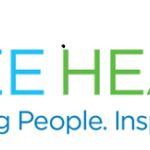 The BIC® Cristal® ball pen was first introduced in America in 1959 and 50 years later U.S. retailers were selling approximately 400,000 every day. It was an instant success partly due to the fact that it lived up to its advertising slogan, “Writes first time, every time.”
The BIC® Cristal® ball pen was first introduced in America in 1959 and 50 years later U.S. retailers were selling approximately 400,000 every day. It was an instant success partly due to the fact that it lived up to its advertising slogan, “Writes first time, every time.”When considering the adoption of electronic health record (EHR) technology, physicians and healthcare providers are right to demand the same reliability.
As a multispecialty physician group, Sheridan Healthcare must utilize an EHR technology that offers the ability to collect data in a uniform, dependable manner in hospitals across the country with multiple IT environments. All of this must be done while also considering the existing workflows and widely-varied EHR training or skills of our more than 1,200 providers.
When evaluating the pros and cons of various systems under consideration, the priority was to identify technology that could be realistically adopted and reliably used. Innovative ideas that addressed short term constraints while still positioning for growth into more sophisticated solutions in the longer term was key. With this in mind, there was no ignoring the fact that most physicians and healthcare providers are used to pen and paper records. Interestingly enough, going back to basics helped them discover the right EHR approach to meet our needs.
CAREWritEHR® enables providers to document as they are accustomed, using a specialized ballpoint pen with an optical corder. The digital pen and paper solution, using technology from Shareable Ink®, records every stroke and transmits the information for processing and conversion to digital data.
After a successful deployment of CAREWritEHR at more than a dozen acute care hospitals, Sheridan is launching a multi-phased rollout to our clinical sites across the country. In evaluating EHR technology, it is important to not only examine the specifications of the system but also the characteristics of the user.
First time: Whenever possible, it is preferable to build on systems already in place. Providers use the same pen and paper data entry skill set they learned in grade school when adopting CAREWritEHR.
Every user: Given the hectic pace of modern healthcare, there is little time for training. Moreover, providers from various sites must be able to use each hospital unit’s technology.
Every time: All technology needs a backup plan that is not overly burdensome in terms of time and effort if the system goes down. Just as with a normal pen, CAREWritEHR uses ink and produces a hardcopy document that can go into a patient’s file even if the electronic system is unavailable.
Everything: Learning new systems can be confusing. Rules and alerts can be embedded into the forms CAREWritEHR utilizes, to notify providers of errors or incomplete data upon completion of the form.
Patients first: Providers want to stay focused on the patient and CAREWritEHR is a mobile, unobtrusive technology that fits in your pocket.
Information provided the first time and every time: When someone asks for a report regarding a patient, you need a system that can provide any or all information. Before investing in any technology, ensure it will increase regulatory compliance and be compatible with other systems. CAREWritEHR utilizes embedded workflow management that makes the data available to other stakeholders in the patient’s care and to offsite billing departments.
Back to basics budgeting: In addition to reducing training, hardware procurement, software licensing, and IT implementation times at facilities, this purchasing decision also encourages EHR adoption. Easily implemented technology such as CAREWritEHR also reduces the hidden costs of lost productivity and impact on current work flow.
First and foremost: There must be a reason for change. Conversion of documentation into digital form enables us to aggregate and analyze metrics leading to improved practices and better outcomes. Sheridan is also using data collected from CAREWritEHR to enhance their revenue cycle management and report quality management initiatives, facility billing and efficiency tracking to our clients.
























